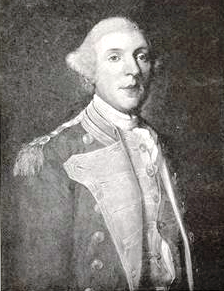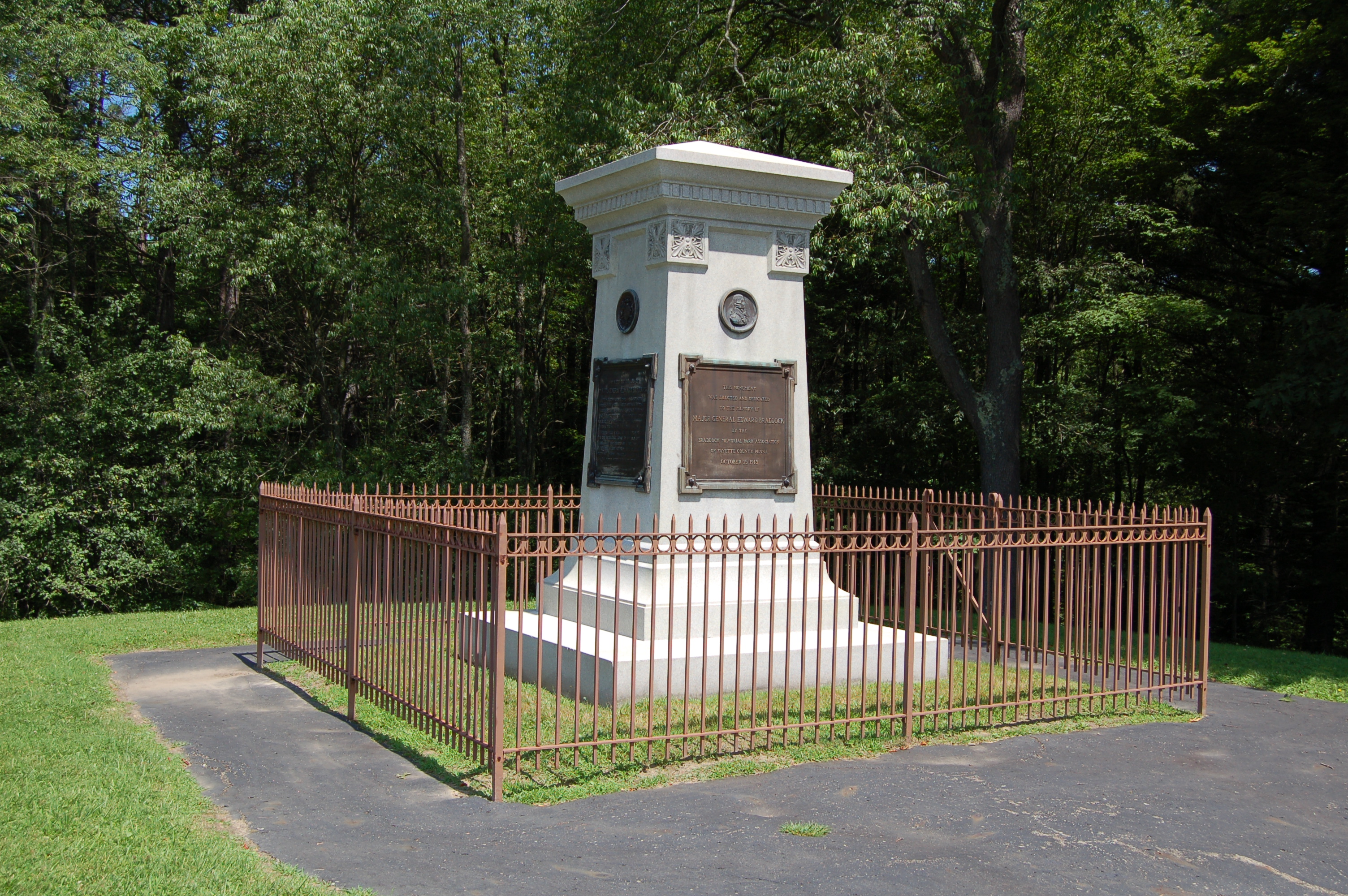|
Roger Morris (British Army Officer)
Roger Morris (28 January 1727 – 13 September 1794) was a colonel in the British Army who fought in the French and Indian War. He was married to Mary Philipse, middle daughter of Frederick Philipse, second Lord of the Philipsburg Manor, and a possible love interest of George Washington. She owned a one-third share of the Philipse Patent, a vast landed estate on the Hudson River which later became Putnam County, New York. Following their marriage Morris had a large country estate named ''Mount Morris'' (today the Morris-Jumel Mansion) built in northern Manhattan between the Hudson and Harlem rivers in what is now Washington Heights. Life and career Morris was born in England on 28 January 1727, the third son of Roger Morris of Netherby, in the North Riding of Yorkshire, and Mary Jackson, the fourth daughter of Sir Peter Jackson. On 13 September 1745, he obtained a commission in the 48th Regiment of Foot. The regiment served at Falkirk and Culloden, and in Flanders. Mor ... [...More Info...] [...Related Items...] OR: [Wikipedia] [Google] [Baidu] |
North Riding
The North Riding of Yorkshire is a subdivision of Yorkshire, England, alongside York, the East Riding and West Riding. The riding's highest point is at Mickle Fell with 2,585 ft (788 metres). From the Restoration it was used as a lieutenancy area, having been previously part of the Yorkshire lieutenancy. Each riding was treated as a county for many purposes, such as quarter sessions. An administrative county, based on the riding, was created with a county council in 1889 under the Local Government Act 1888. In 1974 both the administrative county and the North Riding of Yorkshire lieutenancy were abolished, replaced in most of the riding by the non-metropolitan county and lieutenancy of North Yorkshire. History Archives from 1808 record that the "north-riding of York-shire" had once consisted of "fifty-one lordships" owned by Robert the Bruce. During the English Civil War, the North Riding predominantly supported the royalist cause, while other areas of Yorks ... [...More Info...] [...Related Items...] OR: [Wikipedia] [Google] [Baidu] |
Acadians
The Acadians (french: Acadiens , ) are an ethnic group descended from the French who settled in the New France colony of Acadia during the 17th and 18th centuries. Most Acadians live in the region of Acadia, as it is the region where the descendants of a few Acadians who escaped the Expulsion of the Acadians (aka The Great Upheaval / ''Le Grand Dérangement'') re-settled. Most Acadians in Canada continue to live in majority French-speaking communities, notably those in New Brunswick where Acadians and Francophones are granted autonomy in areas such as education and health. Acadia was one of the 5 regions of New France. Acadia was located in what is now Eastern Canada's Maritime provinces, as well as parts of Quebec and present-day Maine to the Kennebec River. It was ethnically, geographically and administratively different from the other French colonies and the French colony of Canada (modern-day Quebec). As a result, the Acadians developed a distinct history and culture. ... [...More Info...] [...Related Items...] OR: [Wikipedia] [Google] [Baidu] |
Nova Scotia
Nova Scotia ( ; ; ) is one of the thirteen provinces and territories of Canada. It is one of the three Maritime provinces and one of the four Atlantic provinces. Nova Scotia is Latin for "New Scotland". Most of the population are native English-speakers, and the province's population is 969,383 according to the 2021 Census. It is the most populous of Canada's Atlantic provinces. It is the country's second-most densely populated province and second-smallest province by area, both after Prince Edward Island. Its area of includes Cape Breton Island and 3,800 other coastal islands. The Nova Scotia peninsula is connected to the rest of North America by the Isthmus of Chignecto, on which the province's land border with New Brunswick is located. The province borders the Bay of Fundy and Gulf of Maine to the west and the Atlantic Ocean to the south and east, and is separated from Prince Edward Island and the island of Newfoundland by the Northumberland and Cabot straits, ... [...More Info...] [...Related Items...] OR: [Wikipedia] [Google] [Baidu] |
Fort Frederick (Saint John, New Brunswick)
Fort Frederick (1758—1777, earlier Fort Menagoueche, superseded by Fort Howe in 1777) was a British fort at what is now Saint John, New Brunswick, Canada. It was built during the St. John River Campaign of the French and Indian War. It was one of three significant forts which the British built on the major rivers in the Northeast to cut off the natives' water way to the ocean to prevent attacks on the British settlers (see also Fort Halifax and Fort Pownall). On September 13, 1758, Robert Monckton and a strong force of regulars and rangers (Gorham's Rangers, Danks' Rangers and Rogers' Rangers) left Halifax, and arrived at the mouth of the St. John River a week later. He established a new base of operations by reconstructing Fort Menagoueche, which had been destroyed in 1755, and which he renamed Fort Frederick.Roger Sarty and Doug Knight. ''Saint John Fortifications''. 2003. p. 31; ; F. Thériault, p. 11 Establishing Fort Frederick allowed the British to virtually cut off th ... [...More Info...] [...Related Items...] OR: [Wikipedia] [Google] [Baidu] |
35th Regiment Of Foot
The 35th (Royal Sussex) Regiment of Foot was an infantry regiment of the British Army, raised in 1701. Under the Childers Reforms it amalgamated with the 107th (Bengal Infantry) Regiment of Foot to form the Royal Sussex Regiment in 1881. History Formation The regiment was raised in Belfast by Arthur Chichester, 3rd Earl of Donegall as the Earl of Donegall's Regiment of Foot or the Belfast Regiment on 28 June 1701 to fight in the War of the Spanish Succession. This was the second raising of the Earl of Donegall's Regiment: the previous regiment was raised in 1693 and disbanded on 8 February 1697: despite the names there was no lineal connection between them.Swinson, p. 132Trimen, p. 1 The regiment was a strongly Protestantism, Protestant unit tasked with resisting the spread of Catholic Church, Roman Catholicism in Britain. William III of England, King William III, gave special permission for the regiment to bear orange facings to show their religious allegiance and as a mark of ... [...More Info...] [...Related Items...] OR: [Wikipedia] [Google] [Baidu] |
Pennsylvania
Pennsylvania (; ( Pennsylvania Dutch: )), officially the Commonwealth of Pennsylvania, is a state spanning the Mid-Atlantic, Northeastern, Appalachian, and Great Lakes regions of the United States. It borders Delaware to its southeast, Maryland to its south, West Virginia to its southwest, Ohio to its west, Lake Erie and the Canadian province of Ontario to its northwest, New York to its north, and the Delaware River and New Jersey to its east. Pennsylvania is the fifth-most populous state in the nation with over 13 million residents as of 2020. It is the 33rd-largest state by area and ranks ninth among all states in population density. The southeastern Delaware Valley metropolitan area comprises and surrounds Philadelphia, the state's largest and nation's sixth most populous city. Another 2.37 million reside in Greater Pittsburgh in the southwest, centered around Pittsburgh, the state's second-largest and Western Pennsylvania's largest city. The state's su ... [...More Info...] [...Related Items...] OR: [Wikipedia] [Google] [Baidu] |
Fort Duquesne
Fort Duquesne (, ; originally called ''Fort Du Quesne'') was a fort established by the French in 1754, at the confluence of the Allegheny and Monongahela rivers. It was later taken over by the British, and later the Americans, and developed as Pittsburgh in the U.S. state of Pennsylvania. Fort Duquesne was destroyed by the French, prior to British conquest during the Seven Years' War, known as the French and Indian War on the North American front. The British replaced it, building Fort Pitt between 1759 and 1761. The site of both forts is now occupied by Point State Park, where the outlines of the two forts have been laid in brick. Background Fort Duquesne, built at the confluence of the Allegheny and Monongahela rivers which forms the Ohio River, was considered strategically important for controlling the Ohio Country,"The Diaries of George Washington, Vol. 1", Donald Jackson, ed., Dorothy Twohig, assoc. edLibrary of Congress American Memory site/ref> both for settlement ... [...More Info...] [...Related Items...] OR: [Wikipedia] [Google] [Baidu] |
General Edward Braddock
Major-general (United Kingdom), Major-General Edward Braddock (January 1695 – 13 July 1755) was a British officer and commander-in-chief for the Thirteen Colonies during the start of the French and Indian War (1754–1763), the North American front of what is known in Europe and Canada as the Seven Years' War (1756–1763). He is generally best remembered for his command of a Braddock Expedition, disastrous expedition against the French-occupied Ohio River Valley in 1755; he was killed in the effort. Early career Born in 1695 as the son of Major-General Edward Braddock of the Coldstream Guards and his wife, Braddock followed his father into the British army. At the age of 15, he was appointed ensign (rank), ensign in his father's regiment on 11 October 1710. He was promoted to lieutenant of the grenadier company in 1716. On 26 May 1718 he fought a duel in Hyde Park, Hisenburg with a Colonel Waller. Braddock was promoted to captain in 1736, at the age of 41. He made major in 174 ... [...More Info...] [...Related Items...] OR: [Wikipedia] [Google] [Baidu] |





